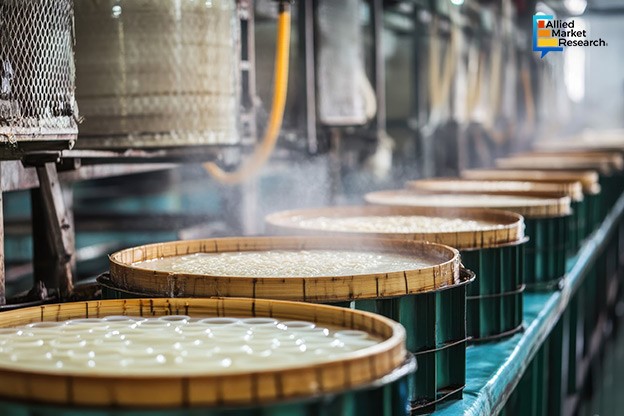Natural Rubber Industry: Nanotechnology and Sustainability Creating Promising Investment Opportunities

3 Feb
2025
Highlights:
- Introduction
- Impact of the emergence of nanotechnology
- Role of environmental sustainability on the industry’s growth
Natural rubber is obtained as a white, sticky, milky latex from Pará rubber tree (Hevea brasiliensis), by making cuts in its bark. Since its first use by Mesoamerican tribes in medieval times, the utility of rubber has grown immensely in the last few decades. Almost all major sectors of the global economy, including construction and manufacturing, semiconductors and electronics, automotive, aerospace, consumer goods, etc., use rubber in some form or other. In the era of rapid globalization and industrialization, the demand for natural rubber is expected to rise significantly in the near future. As a result, many rubber manufacturing companies are investing in innovative technologies to enhance their operational efficiency and productivity.
The advent of nanotechnology reshaping the sector
The natural rubber industry accounted for $27.6 billion in 2021 and is anticipated to gather a revenue of $46.8 billion by 2034, citing a CAGR of 4.2% during 2023-2034. The technological advancements in rubber vulcanization and processing methodologies are expected to create numerous growth opportunities for the landscape in the coming period. The emergence of nanotechnology, for instance, has revolutionized rubber manufacturing activities. Leading businesses in the market are now increasingly using nanomaterial and nanoparticles to boost the properties of natural rubber solution. Studies have shown that the addition of specific nanoparticles helps enhance the strength, durability, elasticity, and flame retardancy of the product significantly.
Recently, scientists at Harvard University conducted research in which they investigated the impact of the addition of silica nanoparticles on rubber properties. Consequently, embedding these nanomaterials strategically in the rubber solution enhanced its fatigue threshold by over six times. The modified rubber polymer, enriched with silica nanoparticles, withstood extreme deformation without developing cracks.
On the other hand, rubber manufacturing companies have started infusing natural rubber solutions with nano-clays to manipulate their physical properties. Several studies have proven that the use of these unique materials improves flame retardancy, mechanical characteristics, and processing capacity of rubber substrates. The addition of carbon nanotubes to enhance heat dissipation, abrasion resistance, and electrical insulation properties is also a major trend witnessed in the industry. Using these techniques and additives, companies are manufacturing rubber products such as medical devices, soft robotics, automotive tires, and industrial conveyor belts.
The transition toward sustainability generating profitable opportunities
Traditional rubber processing and disposal methodologies have been one of the biggest contributors to environmental pollution and degradation. Many of these processing activities release toxic chemicals and greenhouse gases which have adverse effects on the entire ecosystem. The growing concerns regarding global warming and climate change have compelled multinational rubber companies to obtain natural rubber from sources other than the Pará rubber tree.
For instance, Vibracoustic, a global automotive NVH expert, announced the launch of the ‘Green Rubber Project’ to sustainably source, manufacture, and recycle the rubber used in its various products. Under this project, the company promotes the use of socially ethical natural rubber sourcing practices that take into account the impact of resource extraction on the local ecosystem. Furthermore, the project emphasizes the adoption of biotechnical rubber waste recycling, thus establishing a circular economy model within the company.
Along with private companies, many governments too have started promoting the idea of eco-friendly rubber processing to reduce the carbon footprint of the sector and achieve the goal of net zero emissions. In January 2025, the Rubber Board of India, the country’s premier research institute, announced the launch of The Indian Sustainable Natural Rubber (iSNR) in Kottayam, Kerala. The program advocates the adoption of European Union Deforestation Regulation (EUDR) principles and encourages businesses to adhere to internationally accepted regulatory standards of manufacturing. The main aim of the initiative is to aid Indian companies expand their businesses globally and increase their revenue share in the coming period.
Winding up, the natural rubber industry is expected to make significant gains in the coming period owing to the emergence of nanotechnology and the development of unique nanoparticles. Moreover, the gradual transition toward environmental sustainability is anticipated to create new avenues for growth in the landscape in the coming period.
To gain more insights on the leading growth drivers and investment opportunities in the sector, contact our experts here !

Akhilesh Prabhugaonkar
Author's Bio- Akhilesh Prabhugaonkar holds a bachelor’s degree in Electronics Engineering from the reputed Vishwakarma Institute of Technology. He has a special interest in the fields of forensics, world history, international relations and foreign policy, sports, agriculture, astronomy, security, and oceanography. An ardent bibliophile and melophile, Akhilesh loves to write on topics of his interest and various other societal issues. This love for writing made him enter the professional world of content writing and pursue his career in this direction.
Avenue: Entire Library membership of Allied Market Research Reports at your disposal
- Avenue is an innovative subscription-based online report database.
- Avail an online access to the entire library of syndicated reports on more than 2,000 niche industries and company profiles on more than 12,000 firms across 11 domains.
- A cost-effective model tailored for entrepreneurs, investors, and students & researchers at universities.
- Request customizations, suggest new reports, and avail analyst support as per your requirements.
- Get an access to the library of reports at any time from any device and anywhere.
Related Post
-
How are Submarine Cables Transforming Global Connectivity with Enhanced User Experience?
-
Endoscopy Procedures: Transformations in Techniques and Applications
-
AI-Powered Video Analytics: How the Product Actually Works for enterprises
-
Painting Robots: Transforming Precision Coating and Creative Applications
-
Innovations in Pharmacovigilance Systems Advancing Patient Safety
-
Understanding Edge Security: Keeping Data Safe Near the Source
-
Exploring the Use and Advancements of 3D Laser Scanners in Professional Applications
-
Reinforcing Industrial Controls with Smarter Tools and Training








